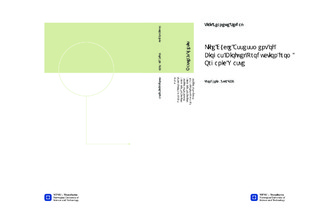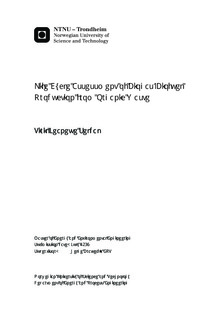| dc.contributor.advisor | Brattebø, Helge | nb_NO |
| dc.contributor.author | Seldal, Tiril Jeanette | nb_NO |
| dc.date.accessioned | 2014-12-19T13:56:24Z | |
| dc.date.available | 2014-12-19T13:56:24Z | |
| dc.date.created | 2014-10-02 | nb_NO |
| dc.date.issued | 2014 | nb_NO |
| dc.identifier | 752203 | nb_NO |
| dc.identifier | ntnudaim:12012 | nb_NO |
| dc.identifier.uri | http://hdl.handle.net/11250/257981 | |
| dc.description.abstract | The focus on energy production is important today and will be of even bigger importance in the future. With an increase in the world s population and at the same time a more energy demanding one the energy issue is and will be one aspect that will involve all of us. The demand and environmental impacts will require that an increasing share of the energy will be renewable. Waste systems has therefore become of bigger interests in the resent years.This thesis has looked at biogas/biofuel production from organic waste. Production of biogas from different types of food wastes and the upgrading to liquefied biogas (LBG) for the value chain of Romerike biogas plant (RBA) located outside Oslo has been chosen as a case study. An evaluation of resource efficiency performance and environmental life cycle impact for RBA has been conducted using material flow analysis (MFA) and life cycle assessment (LCA). The resource efficiency performance has been found by using MFA and measured by definition of indicators for material rate of recovery (MRR), nutrient rate of recovery (NRR) and energy efficiency (η). The MRR was found to be 3.6%. NRR for N and P was found to be respectively 26.1% and 7.8%. It was found that the DM content in solid biofertilizer as well as the food waste share in the residual waste had large impacts on these indicators. The energy efficiency of the system was found to be very low, 2.5%. This was due to that data for sold gas was received that actually was much lower than the produced gas. Energy efficiency of 26.1% was found by using an estimated volume correlated to the waste amount delivered to RBA in the investigated period. This showed that the use of correct produced gas volume has a large impact. In general the indicator values found were evaluated to be poorer than would have been the case if better data had been provided as well as the plant had not been in a run-up period.In the LCA conducted the GWP had the main focus. It was found that the RBA value chain had a total GWP impact of 455 kg CO2-eq./FU. By the processes defined the collection of HHW had the biggest impacts. In all except one category these two processes contributed to over 80% of the impact. The contribution found was evaluated to be higher than it is in reality due to the data used.It was found an avoided burden of 747 396 kg CO2-eq by implementing the value chain in contrast to use the alternative option (diesel and chemical fertilizer).Due to large uncertainties in the models established the results found in this thesis should be used more to indicate where there are problems than contribute to specific measures to be done. It is therefore beneficial that the models are improved by better definition of systems as well as more specific data should be provided. | nb_NO |
| dc.language | eng | nb_NO |
| dc.publisher | Institutt for energi- og prosessteknikk | nb_NO |
| dc.title | Life Cycle Assessment of Biogas/Biofuel Production from Organic Waste | nb_NO |
| dc.type | Master thesis | nb_NO |
| dc.source.pagenumber | 129 | nb_NO |
| dc.contributor.department | Norges teknisk-naturvitenskapelige universitet, Fakultet for informasjonsteknologi, matematikk og elektroteknikk, Institutt for elkraftteknikk | nb_NO |

